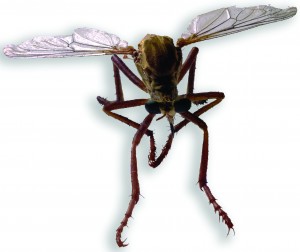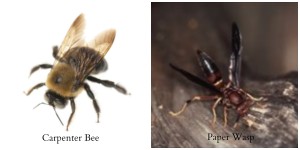READY TO GET STARTED?
REQUEST A FREE ESTIMATE
Fill out the form below or call (888) 466-7849 for a free, no-obligation estimate.
Good news…we’re no longer in a drought!!
Bad news…thanks to all of the record breaking rain, we have record amounts of pests, especially mosquitoes!
 Moisture is known to attract pests. They, like humans, need moisture to survive. So it’s no surprise that with the large amount of rain we’ve gotten this year that mosquitoes have become a major issue for Georgia residents.
Moisture is known to attract pests. They, like humans, need moisture to survive. So it’s no surprise that with the large amount of rain we’ve gotten this year that mosquitoes have become a major issue for Georgia residents.
Georgia is no stranger to mosquitoes. Between standing water (lakes, ponds, creeks, even standing water in your yard) and the local vegetation, we are accustomed to this issue. While some residents turn to DIY options, those aren’t always effective. Going to the local hardware store and picking out a product from the shelves may help short term but will not get to the source of the mosquito infestation.
Northwest Exterminating’s Green Mosquito Control provides monthly mosquito treatments by a licensed professional. Our professionals are knowledgeable about the products they are using, what attracts mosquitoes, and the process of keeping them away. Our professional exterminators will inspect the property and identify the source of the breeding and nesting areas. After they’ve determined these areas they are able to apply an environmentally friendly product derived from flowers and bacteria.
For tips on ways to reduce mosquitoes visit HERE.
For more information on Northwest Exterminating’s Green Mosquito Control call 888.466.7849 or visit us online at www.callnorthwest.com
School is back in so inevitably it’s time to have “the talk”. Ya know, the one we dread every year…the talk about LICE! September is Lice Prevention Month but these days, with school starting in August, it’s best to have the conversation early!
Lice, tiny little wingless insects that make their home in human hair, spreads rapidly! On the bright side, although creepy, they do not spread disease and are by most accounts not a danger to our health. However, they are annoying and highly contagious. They can cause itchiness, redness, and even slight inflammation.
Bees and wasps are often confused for one another. Although they both belong to the hymenoptera order and share similar features, they are different. Below is a list of basic shared features, as well as a list of features that set them apart from one another.

Pictures courtesy of NPMA
Bees AND Wasps
Bees
Wasps
For bee and wasp removal, call our team at Northwest Exterminating!
It’s important to protect yourself and your pets from ticks this season! Keep reading for more information on the little suckers!
BRIEF DESCRIPTION
HABITS
SPECIES
THREATS
PREVENTION
OTHER PESTS TO LOOK OUT FOR
Call Northwest Exterminating for information on how to protect your home and loved ones from ticks.
Besides being interesting to look at, there are many little known but fascinating facts about insects that make these pests something to marvel at. Perhaps one reason why it takes a skilled pest control company to totally eliminate insect pests is because of their general resilience. As we blogged about before, the notion that roaches can withstand nuclear warfare is true (to a degree). It should be of no surprise then that the larvae of one type of midge can survive for up to three days in liquid nitrogen. Since the temperature of liquid nitrogen is negative 321 degrees, that’s a pretty amazing feat. Now we know who survived the Ice Age!
Some humans have trouble finding a date and even resort to the Internet to search for love all over the world. Well, we’re not the only ones who can find a mate from a distance. Indian moon moths are able to smell the pheromones of a potential mate over 6 miles away! How’s that for a long distance relationship?
Another intriguing but devastating fact pertains to mosquitoes. For the most part, we are bothered by mosquitoes due to the pesky insect bites they leave. Red and itchy marks aren’t the only thing that mosquitoes can leave behind though. Often, mosquitoes transmit diseases to our blood, so devastating in fact that mosquitoes have killed more humans worldwide than all of the wars in history. If you want help fighting that enemy, Northwest Exterminating has a Mosquito Reduction program designed to keep mosquitoes away from the home front.
You can go to this link http://science.discovery.com/creatures/10-weird-bug-facts.htm
for more interesting bug facts.